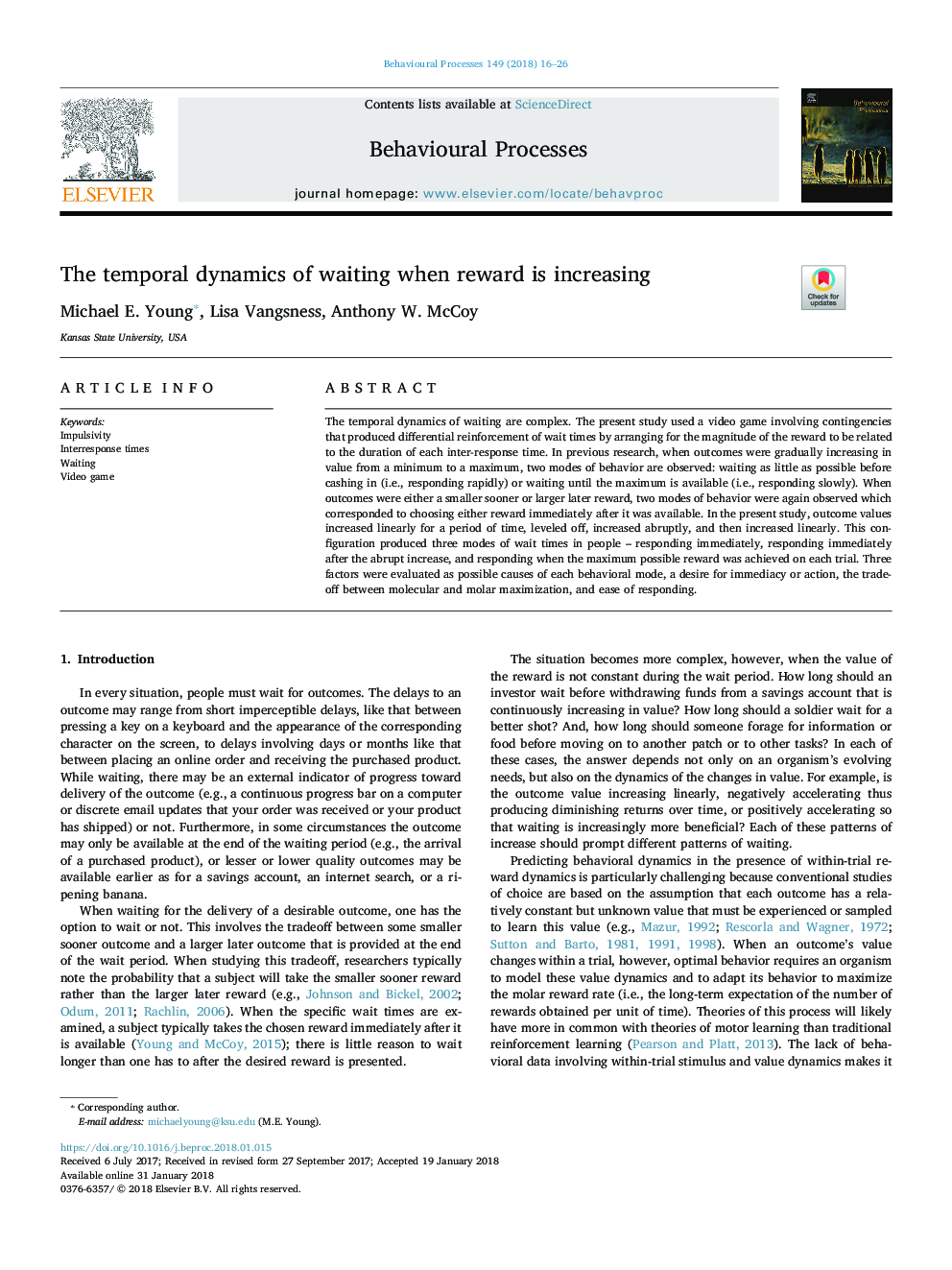| Article ID | Journal | Published Year | Pages | File Type |
|---|---|---|---|---|
| 8496994 | Behavioural Processes | 2018 | 11 Pages |
Abstract
The temporal dynamics of waiting are complex. The present study used a video game involving contingencies that produced differential reinforcement of wait times by arranging for the magnitude of the reward to be related to the duration of each inter-response time. In previous research, when outcomes were gradually increasing in value from a minimum to a maximum, two modes of behavior are observed: waiting as little as possible before cashing in (i.e., responding rapidly) or waiting until the maximum is available (i.e., responding slowly). When outcomes were either a smaller sooner or larger later reward, two modes of behavior were again observed which corresponded to choosing either reward immediately after it was available. In the present study, outcome values increased linearly for a period of time, leveled off, increased abruptly, and then increased linearly. This configuration produced three modes of wait times in people - responding immediately, responding immediately after the abrupt increase, and responding when the maximum possible reward was achieved on each trial. Three factors were evaluated as possible causes of each behavioral mode, a desire for immediacy or action, the trade-off between molecular and molar maximization, and ease of responding.
Keywords
Related Topics
Life Sciences
Agricultural and Biological Sciences
Animal Science and Zoology
Authors
Michael E. Young, Lisa Vangsness, Anthony W. McCoy,
